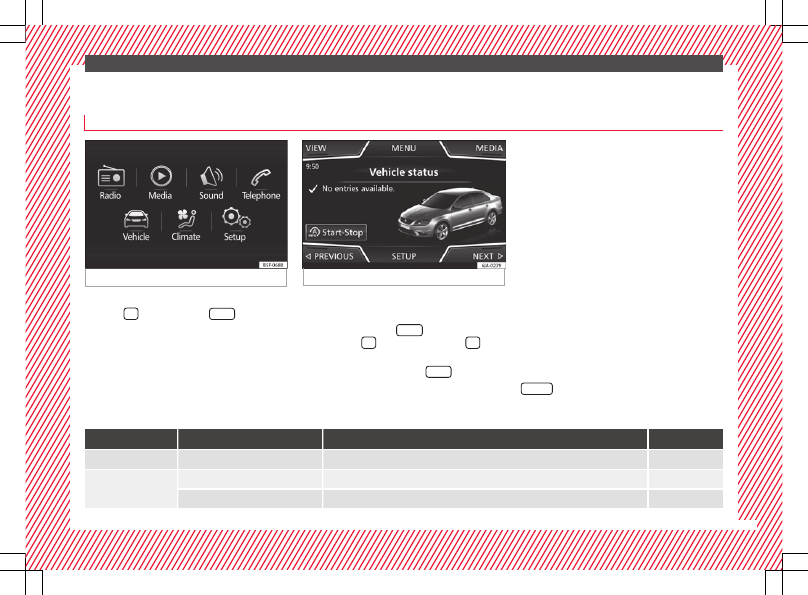Seat Toledo. Service Manual - part 2
-------------------------------------------------------------------------------------------------------------------------------------------------------------

The essentials
Easy Connect
CAR menu settings (Setup)
Fig. 33
Easy Connect: Main menu
Fig. 34
Easy Connect: CAR menu
To select the settings menus, press the Easy
Connect
button and the
Setup
function
button.
The actual number of menus available and
the name of the various options in these me-
nus will depend on the vehicle’s electronics
and equipment.
●
Switch the ignition on.
●
If the Infotainment System is off, switch it
on.
●
Press the system's
MENU
button and then
the system's
›››
button or
but-
ton to go to the
CAR
menu
.
●
Press the function button
Setup
to open the
menu
Vehicle settings
.
●
To select a function in the menu, press the
desired button.
When you press the menu button, the last se-
lected menu will always be displayed.
When the function button check box is activa-
ted , the function is active.
Any changes made using the settings menus
are automatically saved on closing the
BACK
menus.
Menu
Submenu
Possible setting
Description
ESC system
–
Activation of the Electronic Stability Programme (ESC)
Tyres
Tyre pressure monitoring
Tyre pressure storing (Calibration)
Winter tyres
Activation and deactivation of the speed warning. Setting the speed warning value
»
21